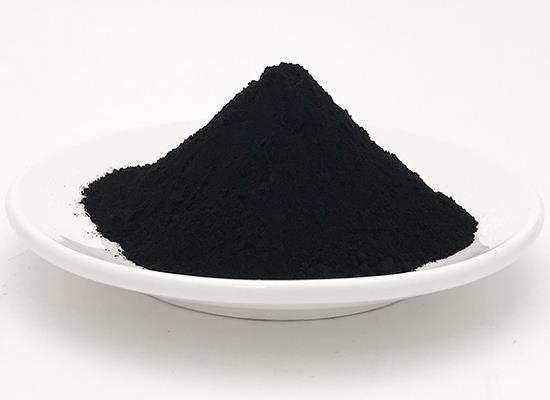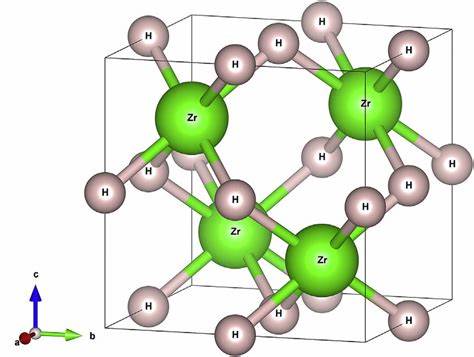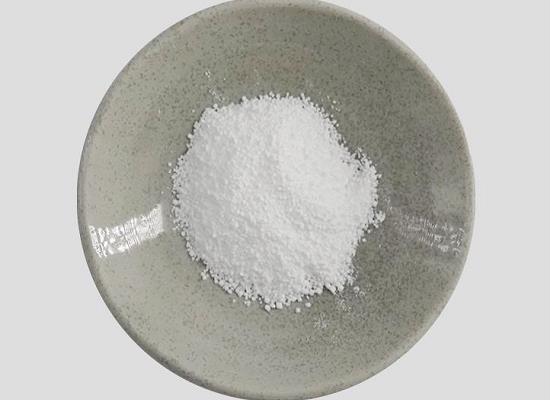Zirconium Hydride: Characteristics and Applications in Enhancing Mechanical Properties
General Description
Zirconium hydride is a versatile inorganic compound known for its exceptional properties, making it valuable across industries. Its stability, thermal conductivity, and hydrogen storage capabilities make it ideal for high-temperature applications and hydrogen storage technology. Zirconium hydride's reactivity enables the formation of innovative compounds with diverse functionalities. Compared to pure zirconium, Zirconium hydride exhibits unique characteristics, impacting its mechanical, thermal, and electrical properties. Its application in enhancing mechanical properties in ZrB2–SiC composites through pulsed electric current sintering processes demonstrates its significant role in improving composite strength and toughness. Overall, Zirconium hydride shows promise for driving innovation in various sectors.

Figure 1. Zirconium hydride
Overview
Zirconium hydride, with the chemical formula ZrH2, is an inorganic compound renowned for its exceptional properties that have positioned it as a valuable material across various industries. Known for its high stability and remarkable thermal conductivity, ZrH2 is particularly well-suited for applications in high-temperature settings. Moreover, its capacity to efficiently store and release hydrogen has sparked significant interest in the realm of hydrogen storage technology. The compound's reactivity with other elements further enhances its versatility, enabling the formation of innovative compounds with a wide range of functionalities. The unique combination of properties exhibited by zirconium hydride presents an exciting opportunity for further exploration and advancement in fields such as energy storage, catalysis, and materials science. By leveraging its distinct characteristics, researchers and engineers can unlock new possibilities for enhancing technological solutions and addressing challenges in various sectors. Zirconium hydride stands as a promising material with immense potential for driving innovation and progress in the scientific and industrial arenas. 1
Characteristics
Zirconium hydride, characterized by its unique properties, exhibits distinct characteristics that set it apart from pure zirconium metal and zirconium deuteride. The lattice parameter of zirconium hydride is larger than that of zirconium deuteride, with the difference attributed to the vibrational frequency variance between hydrogen and deuterium isotopes. The electronic structure of zirconium hydride differs significantly from that of pure zirconium metal, as evidenced by the presence of a peak corresponding to the Zr-H bond at 6.4 eV below the Fermi energy in XPS spectra. Moreover, the elastic moduli of zirconium hydride and deuteride surpass those of pure zirconium metal and decrease with higher hydrogen isotope content. Zirconium deuteride demonstrates higher elastic moduli compared to the hydride. Additionally, the microhardness of zirconium hydride slightly decreases with increasing hydrogen content, remaining higher than that of pure zirconium metal, while the deuteride exhibits slightly higher microhardness than the hydride. Furthermore, the electrical resistivity of zirconium hydride is slightly elevated compared to zirconium metal and remains relatively stable regardless of hydrogen content. The thermal conductivity of zirconium hydride is slightly lower than that of zirconium metal, with electron contribution dominating over phonon contribution to thermal conductivity. These findings underscore the intricate and distinctive characteristics of zirconium hydride that influence its mechanical, thermal, and electrical properties, highlighting its potential for diverse applications in various fields. 2
Applications in Enhancing Mechanical Properties
Zirconium hydride plays a crucial role in enhancing the properties of ZrB2–SiC composites when used in pulsed electric current sintering processes. The addition of Zirconium hydride in these composites leads to several beneficial effects, including the removal of B2O3 from ZrB2 particle surfaces, the introduction of a ZrC phase into the composites, and the refinement of SiC particle sizes during the sintering process. These modifications result in significant improvements in the mechanical properties of the ZrB2–SiC composite ceramic. Specifically, the three-point flexural strength and fracture toughness of the composite exhibit notable enhancements, increasing from 569 MPa and 3.9 MPa m1/2 to 998 MPa and 4.8 MPa m1/2, respectively. This enhancement in mechanical properties can be attributed to the synergistic effects of Zirconium hydride addition, which facilitates densification, refines microstructures, and ultimately strengthens the composite material. Overall, the incorporation of Zirconium hydride in pulsed electric current sintered ZrB2–SiC composites proves to be a valuable strategy for improving the mechanical performance and overall quality of these composite materials, making them more suitable for a wide range of applications in industries such as aerospace, automotive, and advanced manufacturing. 3
Reference
1. Zirconium(II) hydride. National Center for Biotechnology Information. 2024; PubChem Compound Summary for CID 71317406.
2. Shinsuke Y. Characteristics of zirconium hydride and deuteride. Journal of Alloys and Compounds. 2002; 330: 99-104.
3. Songlin R. Influence of ZrH2 addition on pulsed electric current sintered ZrB2–SiC composites. Scripta Materialia, 2014; 77: 41-44.
);


